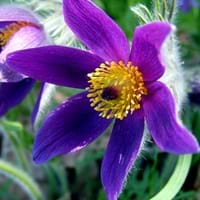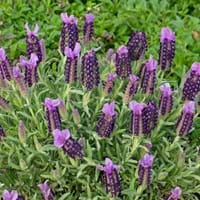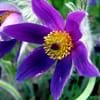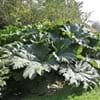Life Span
Annual and Perennial
Annual and Perennial
Origin
Europe, Eastern Europe, Southern Europe, Western Europe, United Kingdom
Mediterranean
Types
Pulsatilla vulgaris, Pulsatilla vulgaris rubra, Pulsatilla vulgaris alba
Not Available
Number of Varieties
Not Available
Habitat
meadows, Slopes, Wooded slopes
Mediterranean region
USDA Hardiness Zone
5-7
8-9
Sunset Zone
2b, 3a, 3b, 4, 5, 6, 15, 16, 17
4, 5, 6, 7, 8, 9, 10, 11, 12, 13, 14, 15, 16, 17, 18, 19, 20, 21, 22, 23, 24
Habit
Clump-Forming
Cushion/Mound-forming
Flower Color
Indigo, Purple, Violet
Purple, Blue Violet, Plum
Flower Color Modifier
Not Available
Bicolor
Fruit Color
Greyish Brown
Not Available
Leaf Color in Spring
Light Green
Sea Green, Gray Green
Leaf Color in Summer
Light Green
Sea Green, Gray Green
Leaf Color in Fall
Light Green
Sea Green, Gray Green
Leaf Color in Winter
Light Green
Light Green
Leaf Shape
Rosette
Long Narrow
Plant Season
Spring
Spring, Summer, Fall, Winter
Sunlight
Full Sun
Full Sun
Type of Soil
Loam, Sand
Loam, Sand
The pH of Soil
Neutral, Alkaline
Acidic, Neutral
Soil Drainage
Well drained
Well drained
Bloom Time
Early Spring, Spring
Late Spring, Early Summer, Summer
Tolerances
Drought
Drought
Where to Plant?
Ground, Pot
Container, Ground, Pot
How to Plant?
root cutting, Seedlings
Seedlings
Plant Maintenance
Medium
Medium
Watering Requirements
Medium
Average Water Needs
In Summer
Lots of watering
Lots of watering
In Spring
Moderate
Moderate
In Winter
Average Water
Average Water
Soil pH
Neutral, Alkaline
Acidic, Neutral
Soil Type
Loam, Sand
Loam, Sand
Soil Drainage Capacity
Well drained
Well drained
Sun Exposure
Full Sun
Full Sun
Pruning
Remove damaged leaves, Remove dead branches, Remove dead leaves
Remove damaged leaves, Remove dead branches, Remove dead leaves
Fertilizers
All-Purpose Liquid Fertilizer
All-Purpose Liquid Fertilizer
Pests and Diseases
Cutworms, Larvae of Agave Weevil
Grasshoppers
Plant Tolerance
Drought
Drought
Flower Petal Number
Single
Single
Fragrant Bark/Stem
No
Yes
Foliage Texture
Fine
Fine
Foliage Sheen
Matte
Matte
Attracts
Not Available
Bees, Butterflies, Hummingbirds
Allergy
convulsions, Diarrhea, Not Available, Stomach pain, Vomiting
Headache
Aesthetic Uses
along a porch, deck or patio, Showy Purposes
Showy Purposes
Beauty Benefits
Not Available
Not Available
Environmental Uses
Air purification
Air purification
Medicinal Uses
Not Available
Cold, Nausia, Treating fever, Wounds
Part of Plant Used
Not Available
Flowers, Seeds
Other Uses
Showy Purposes
Air freshner, Used as an insecticide
Used As Indoor Plant
No
Yes
Used As Outdoor Plant
Yes
Yes
Garden Design
Alpine, Mixed Border, Rock Garden / Wall
Bedding Plant, Container, Cutflower, Feature Plant, Herb, Vegetable, Mixed Border, Rock Garden, Wall
Botanical Name
PULSATILLA vulgaris
Lavandula Stoechas
Common Name
Pasque Flower, wind flower, prairie crocus, Easter Flower, meadow anemone
Topped Lavender, Spanish Lavender
In Hindi
Pasque Flower
Spanish Lavender
In German
Kuhschellen
Spanish Lavender
In French
Pasque Flower
Spanish Lavender
In Spanish
Pasque Flower
Spanish Lavender
In Greek
Pasque Flower
Ισπανικά Λεβάντα
In Portuguese
Pasque Flower
Spanish Lavender
In Polish
Sasanka
Spanish Lavender
In Latin
Pasque Flower
Spanish Lavender
Phylum
Vascular plant
Magnoliophyta
Class
Magnoliopsida
Magnoliopsida
Order
Ranunculales
Lamiales
Family
Ranunculaceae
Lamiaceae
Genus
Pulsatilla
Lavandula
Clade
Angiosperms, Eudicots
Angiosperms, Asterids, Eudicots
Subfamily
Not Available
Nepetoideae
Properties of Pasque Flower and Spanish Lavender
Wondering what are the properties of Pasque Flower and Spanish Lavender? We provide you with everything About Pasque Flower and Spanish Lavender. Pasque Flower doesn't have thorns and Spanish Lavender doesn't have thorns. Also Pasque Flower does not have fragrant flowers. Pasque Flower has allergic reactions like convulsions, Diarrhea, Not Available, Stomach pain and Vomiting and Spanish Lavender has allergic reactions like convulsions, Diarrhea, Not Available, Stomach pain and Vomiting. Compare all the properties and characteristics of these two plants. Find out which of these plant can be used as indoor plant. If you are interested to decorate your house and garden, find out aesthetic uses, compare them and select the plant which will beautify your surrounding. Along with beautification, try comparing medicinal and edible uses of Pasque Flower and Spanish Lavender and you can choose the plant having best and most benefits.
Season and Care of Pasque Flower and Spanish Lavender
Season and care of Pasque Flower and Spanish Lavender is important to know. While considering everything about Pasque Flower and Spanish Lavender Care, growing season is an essential factor. Pasque Flower season is Spring and Spanish Lavender season is Spring. The type of soil for Pasque Flower is Loam, Sand and for Spanish Lavender is Loam, Sand while the PH of soil for Pasque Flower is Neutral, Alkaline and for Spanish Lavender is Acidic, Neutral.
Pasque Flower and Spanish Lavender Physical Information
Pasque Flower and Spanish Lavender physical information is very important for comparison. Pasque Flower height is 12.70 cm and width 15.20 cm whereas Spanish Lavender height is 60.00 cm and width 60.00 cm. The color specification of Pasque Flower and Spanish Lavender are as follows:
Pasque Flower flower color: Indigo, Purple and Violet
Pasque Flower leaf color: Light Green
Spanish Lavender flower color: Purple, Blue Violet and Plum
- Spanish Lavender leaf color: Sea Green and Gray Green
Care of Pasque Flower and Spanish Lavender
Care of Pasque Flower and Spanish Lavender include pruning, fertilizers, watering etc. Pasque Flower pruning is done Remove damaged leaves, Remove dead branches and Remove dead leaves and Spanish Lavender pruning is done Remove damaged leaves, Remove dead branches and Remove dead leaves. In summer Pasque Flower needs Lots of watering and in winter, it needs Average Water. Whereas, in summer Spanish Lavender needs Lots of watering and in winter, it needs Average Water.





